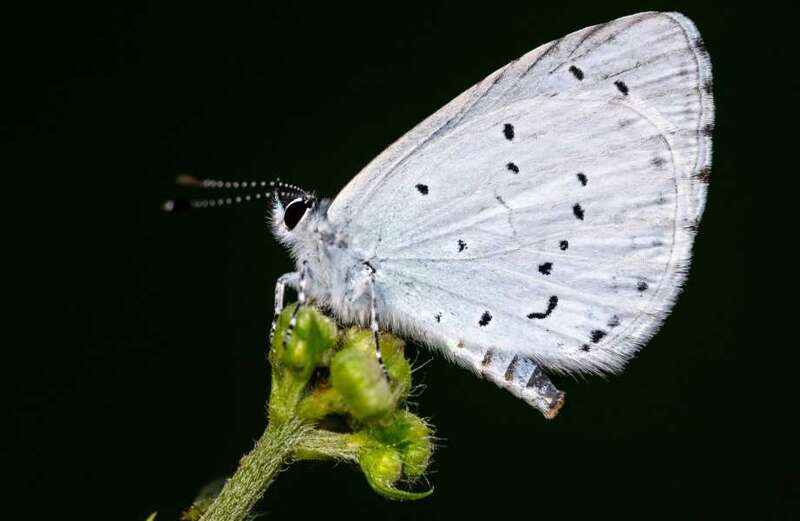BUTTERFLY disease is a group of rare genetic skin disorders which make the skin so delicate, it can blister and tear from the slightest trauma or friction.
As fragile as a butterfly's wing, you might say.

The condition is also known as epidermolysis bullosa (EB) and it's usually diagnosed in babies and young children as the symptoms tend to be obvious from birth.
What is butterfly disease?
There are three main types of butterfly disease, which are determined by where on your body the skin blisters and which layer is affected.
The first type is epidermolysis bullosa simplex (EBS), the most common form of the disease.
 Parents rave over 'miracle' treatment that clears up baby's agonising eczema
Parents rave over 'miracle' treatment that clears up baby's agonising eczema
In its mildest form, EBS causes painful blisters to develop on the palms of the hands and soles of the feet after physical activity, such as walking, gardening or playing sport.
The buttocks and inner thighs can also break out in blisters and the skin on some adults' palms and soles may thicken, as might their nails.
Intermediate EBS can result in blisters anywhere on the body from friction, as well as in the mucus membranes in the nose, mouth and throat.
Children with the most severe form of EBS can develop up to 200 blisters in a single day, making their skin vulnerable to infection, according to the NHS.
The second type of butterfly disease is junctional epidermolysis bullosa (DEB), which causes widespread blistering of the skin, mucous membranes and sometimes the eyes and some internal organs.
Hair loss can be common due to scalp blistering, as are:
- slow-healing injuries, especially of the lower legs
- deformity or loss of fingernails and toenails
- changes to skin colour that look like large, irregular moles
- possible scarring of the skin
- fragile teeth prone to decay
- mouth ulcers and blisters
It's extremely rare for people to experience more severe forms of JEB, but sufferers can have complications like malnutrition, dehydration, breathing difficulties and sepsis.
Dystrophic epidermolysis bullosa (DEB) is the third type of butterfly disease that causes blistering on the hands, feet, arms and legs, which usually results in scarring. Milia - tiny white spots - often form at the site of the blisters.
Is butterfly disease an autoimmune disease?
Butterfly disease is usually caused by faulty gene that makes sufferers' skin more fragile. Children might inherit the gene from a parent who has EB, or both parents may be carriers of the mutated gene.
In some cases, the gene change causing EB can happen by chance.
 I've been 'burned so badly by eczema creams' I no longer recognise myself
I've been 'burned so badly by eczema creams' I no longer recognise myself
But there is an form of EB that isn't inherited, which is classed as an autoimmune disease because sufferers' immune systems attack healthy tissue.
This is called epidermolysis bullosa acquisita (EBA) and causes skin to blister easily, while also affecting the mouth, throat and digestive tract
EBA is extremely rare and symptoms tend to only affect people over the age of 40 - later than for those whose EB is inherited.
How to treat butterfly disease?
There currently isn't a cure for butterfly disease. But there are certain treatments that aim to relieve symptoms and prevent complications - such as infections - from developing.
You many be prescribed medicines to reduce pain or treat an infection and if EB makes it difficult to use your hands or causes your food pipe to narrow, you may be eligible for surgery.
Medical specialists will be able to decide what treatment is best and can recommended how to manage it on a daily basis.
This can include:
- popping blisters with a sterile needle
- applying protective dressings
- avoiding things that make the condition worse
General advice on not aggravating butterfly disease will vary on the severity of the symptoms but it can include:
- not walking long distances as this can cause blisters to form on the soles of the feet
- avoiding everyday knocks, bumps and scratches
- avoiding rubbing your child's skin, for example when you lift them
- keeping your child as cool as possible in warm weather
- avoiding clothes that fit tightly or rub against the skin to try to prevent blistering
- wearing clothes made from natural fabrics, like cotton
- choosing comfortable shoes that fit well
What is the difference between lupus and butterfly disease?
Lupus is a complex autoimmune disease that causes rashes, joint pain and extreme tiredness.
Though it's not related to butterfly disease, people who have lupus can get rashes on their face that appear in the shape of a butterfly across their nose and cheeks.
It's sometimes called a malar rash and it may pop up after sun exposure.
Other conditions could also be its cause, such as rosacea, Lyme disease and skin infections like cellulitis, according to healthline.
What does a butterfly skin rash look like?
The exact features of a butterfly or malar rash can vary do to its underlying cause.
But it can:
- be red or purple in colour
- look blotchy or solid
- have flat, slightly raised, or pus-filled bumps
- be itchy or painful
